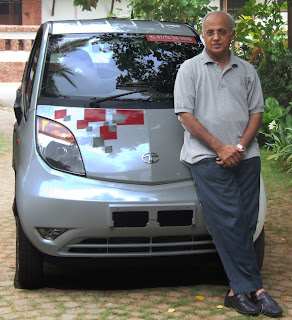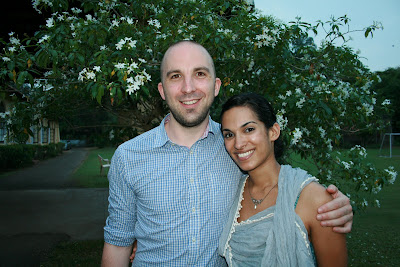Photo credit: Manu R. Mavelil
The Kochi-based Jacob George makes music loudspeakers that have a growing international reputation
The Kochi-based Jacob George makes music loudspeakers that have a growing international reputation
By Shevlin Sebastian
On a hot weekday afternoon, architect Jacob George steps
into a round-shaped building, just next to his house in Kakkanad, a suburb of Kochi. Inside, the floor
is covered by a soft brown carpet. On shelves placed against the walls, there
are numerous CDs, ranging from Bach and Beethoven to Barbara Streisand,
Engelbert Humperdinck, The Eagles, and Yanni Live!
Near one wall are two gleaming silver-coloured ‘Maarga’
loudspeakers, around 3’3” in height. In between are the 'Gaanam' amplifiers. At
a visitor’s request, Jacob slides in a familiar disc: ‘Hotel California’ by the
Eagles.
Soon, the music wafts gently through the speakers. But as
the song picks up the tempo, the sound pulsates through: the lead, electric and
acoustic guitars, as well as the drums. You are gripped by the clarity and
purity of it. Soon, the music reaches a stunning crescendo, with a guitar
interplay between band members Don Felder and Joe Walsh, which goes on for more
than two minutes. A smiling Jacob says, “It took me a long time to get this
kind of sound.”
The major difference between 'Maarga' and the other
speakers is that it has one driver, the round diaphragm that we see from
outside, unlike the three drivers – the tweeter, the mid range, and the woofer
– that are there in other speakers. “In conventional speakers, the sound gets
split into the three drivers,” says Jacob. “As a result, the efficiency drops.
The tonality and the coherence are also affected. However, when you listen to a
single driver, there is no splitting. The sound comes directly from the
amplifier and the music is intense. There is a magical, emotional connect.”
Jacob, who grew up in Singapore,
had studied and worked in the USA
for many years. While there he was looking for good speakers, but most of them
were high-end and unaffordable. So Jacob did some research on the Net and made
the first speakers by himself. “It was then that I discovered that the single
driver produced the best sound,” he says. “One day, I thought, 'Why can't I
work on this further?'”
By this time, Jacob had returned to Kochi, where his retired parents lived. “On
weekends and late at night, I worked on improving the quality of the sound,”
says the pony-tailed Jacob, a partner in the architectural firm, Design
Combine. However, the initial speakers did not do well because the deep bass
sound could not be reproduced. “It was only in 2009 that I was able to solve
the problem by putting in a bass module,” he says. Initially, the company,
which is called Rethm (Sanskrit for harmony), imported drivers from the UK. But now it
is custom-designed by the Mumbai-based Hermit Audio.
So far, Rethm has a line of three loudspeakers: Trishna,
Maarga and Saadhana, which sell at Rs 1.5 lakh, Rs. 2.4 lakh, and Rs.
4.25 lakh respectively. “In the world of high-end speakers, these prices
are low,” says Jacob. “Good speakers can cost anywhere from Rs 10 lakh to Rs.
1.5 crore. Ordinary people like teachers and lawyers buy my products.” At the
moment, Jacob has been selling his speakers in the USA,
Monaco, Norway, Singapore,
Malaysia, Taiwan, Australia,
and South Africa.
“We are steadily developing an international reputation,”
he says. This is confirmed by the reviews which have appeared in Western music
print and e-magazines. In sixmoon.com, reviewer Frederick Beudot says, “I
cannot remember the last time a review announcement generated so many emails,
questions and audition requests as the Trishna has. If this is any indication
of the growing awareness Jacob George’s unconventional yet resolutely
ground-breaking speakers have garnered, the future looks promising.”
Wrote Jason Victor Serinus in Stereophile magazine: “The
biggest surprise was the pleasing sound of the Maarga speakers.”
At this moment, volumes are low because they are hand-made. It is only now that Jacob is
entering the Indian market through dealers in Kochi,
Bangalore, and
Mumbai. And his reasoning is simple: Indians have a ‘foreign is better’
attitude.
“So I wanted to
prove myself outside, so that people could read western reviews and realise how
good the product is,” says Jacob. And, in the coming months, Jacob is hoping
that his speakers will send the cash registers ringing, in India and
abroad, and bring Rethm (harmony) all around.
(The New Indian Express, South India and Delhi)


















